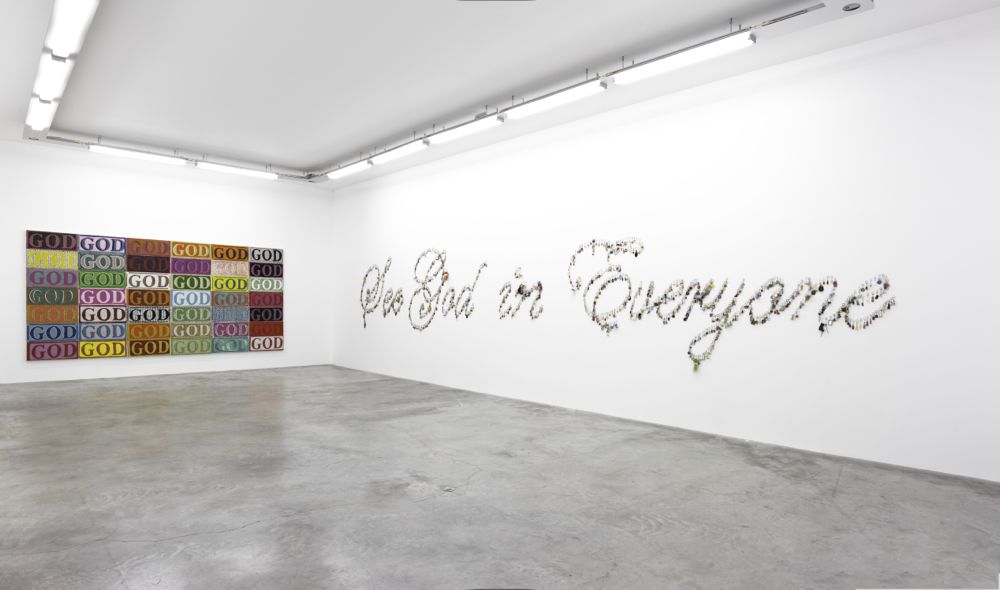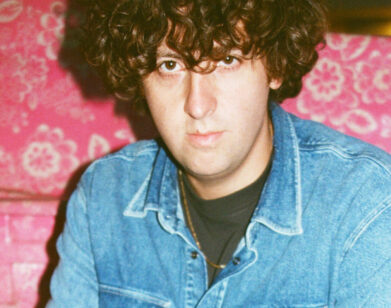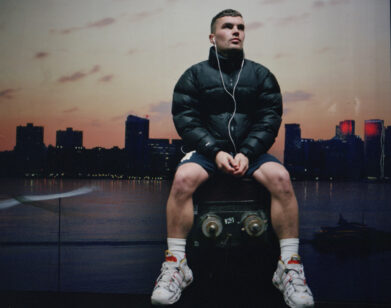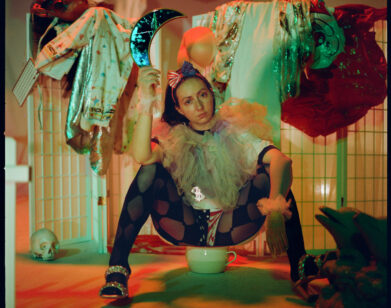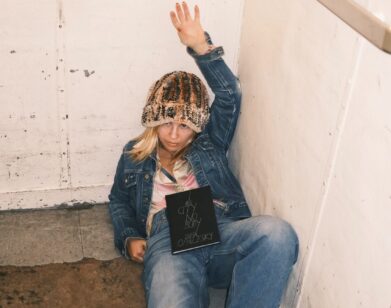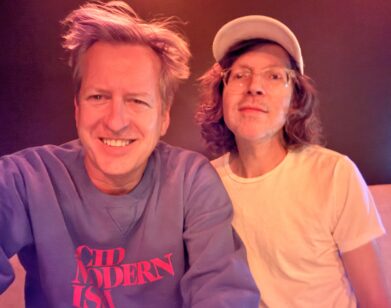Farhad Moshiri’s Simple Things
“If you paint an intelligent subject, does it automatically make it an intelligent painting?” Iranian artist Farhad Moshiri asked at the opening of his current show at Galerie Emmanuel Perrotin in Paris [through July 28]. The exhibition, “Fire of Joy,” aims to question normative values, placing focus instead on happiness. Moshiri contrasts “worthy,” provocative, or referential topics—like Einstein, God, the female figure—with lighter references. Moshiri also combines popular American references with traditional Iranian craft. “A painting isn’t any better because it represents a political scene rather than everyday life,” says the artist. “And happiness too can be a very simple matter—a woman going to the hairdresser, two people chatting. It is about paring down to the bare essentials.”
Sprawling over two floors, the top presents a seemingly random mix of subjects, primarily depicted with miniscule embroided beads on canvas—a fan (Fan; all works, 2012), a glass (Glass), and two women’s hairdos inspired by 1950s advertising (Curl). Each is imbued with a sense of timeless preciousness and painstaking precision. The play of Western references and Persian craft emphasizes the works’ banality.
On the ground floor, Moshiri turns his eye on religion. God in Color is a multicolored grid, again in woven beads on canvas. Each square encloses the word “God,” written as if on a bumper sticker. The result suggests the mass marketing of religion in Iran. A neighboring installation outlines the sentence “See God in Everyone” in plastic keychains, evoking both traditional calligraphy and childlike simplicity. “Banal things can lead to true happiness,” says Moshiri.
Living today in Tehran, Moshiri cites extreme contrasts in his country, where the youth is both God-fearing and rebellious. He also reflects on the 12 years he lived in California. “[In Iran,] there isn’t an oversupply of everything like in America, which means you begin appreciating things you had grown blasé to,” he says. “In an odd way, moving back made me a lot more creative.”

